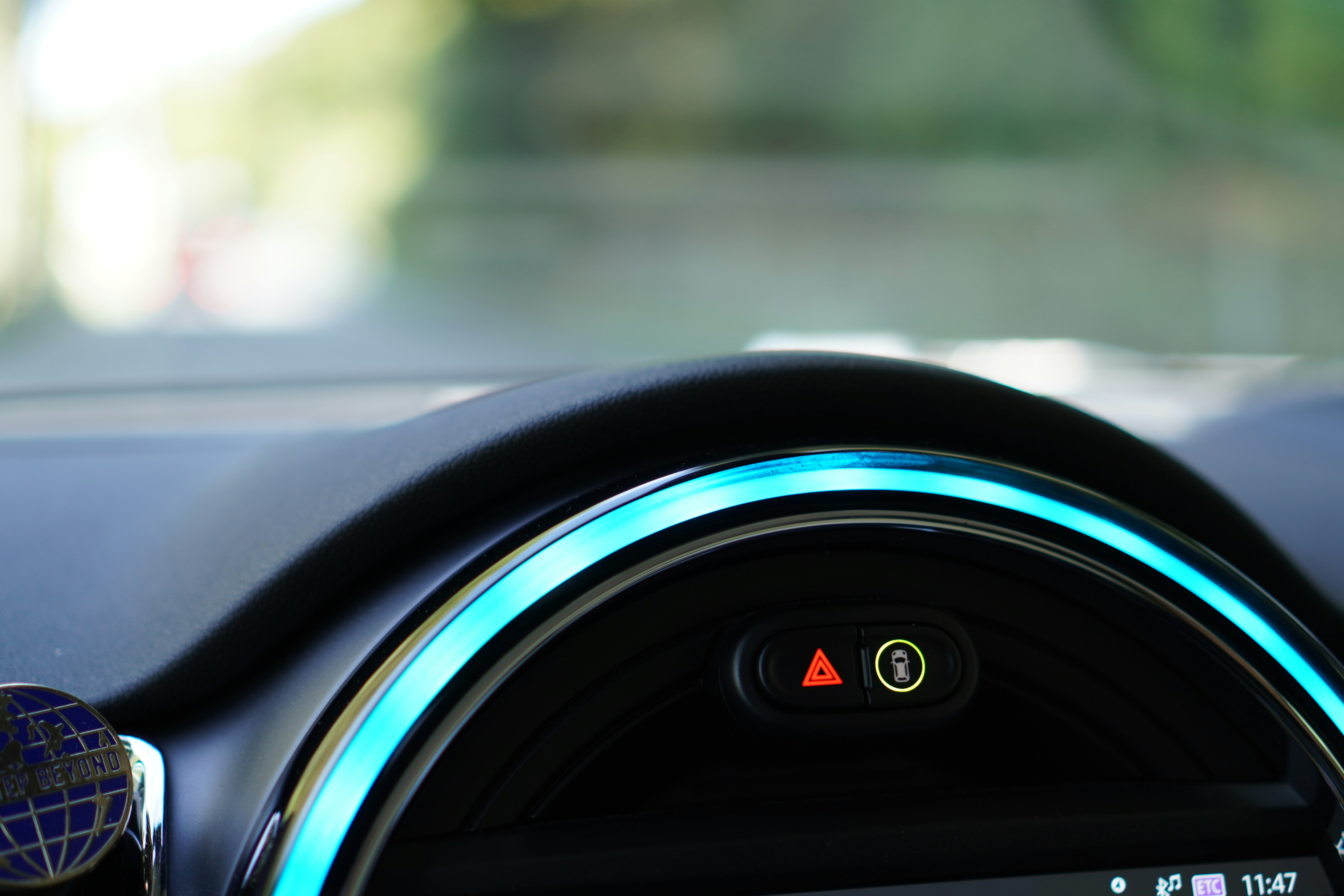Haptic Feedback Revolution: Enhancing the EV Experience Today
As the electric vehicle (EV) landscape continues to evolve, the integration of haptic feedback technology is creating ripples of excitement among drivers. Imagine a world where your vehicle communicates with you through touch, enhancing every drive while keeping distractions at bay. It's not merely a futuristic concept; it’s happening now. This article examines how touch technology is reshaping the driving experience in electric vehicles, from improving user engagement to fostering safer roadways. Buckle up as we dive into a world where sensations elevate your driving routine beyond the mechanical aspects of a car.
Understanding Haptic Feedback in EVs
At the core of the haptic feedback revolution is the science of touch. Haptic feedback technology uses vibrations and motions to simulate the sense of touch, delivering critical information without hindering eye focus on the road. This technological marvel enables drivers to receive alerts and navigate systems through tactile sensations, effectively reducing reliance on visual screens. It’s more than just a novelty; it represents an innovative way to enhance driver interaction with their vehicles.
For instance, rather than taking their eyes off the road to read navigation instructions or recall notifications, drivers can feel vibrations in the steering wheel or seat, indicating how to proceed or alerting them of potential hazards. This is particularly crucial in the age of increased screen time, where cognitive overload can lead to dangerous driving conditions.
Enhancing Driver Engagement with Haptic Interfaces
An EV equipped with advanced haptic interfaces transforms the traditional dashboard into a sensory-rich environment. Through thoughtfully designed tactile feedback, companies are creating an engaging driving experience that resonates on an emotional level. For instance, when drivers engage with infotainment features, pulses or touches on the steering wheel can denote successful interactions, adding a layer of confirmation that visual reminders often miss.
Several automobile manufacturers are leading the charge, embedding haptic technology into their vehicles. Tesla, for example, supplements its simplistic interface with haptic touches on steering wheel controls, giving drivers a sense of connection to their vehicle. Meanwhile, Ford is incorporating haptic feedback in their latest EV models to enhance user experience and make infotainment systems more intuitive.
These interfaces are particularly beneficial for drivers who may be distracted by a busy environment. By providing touch-based feedback, drivers can maintain focus on the road ahead, making for a safer driving context. This is particularly relevant given the state of modern driving, where multitasking becomes the norm.
Prioritizing Safety Through Sensory Interactions
Safety is paramount when it comes to driving, and haptic feedback plays a pivotal role in enhancing it. A study conducted by the National Highway Traffic Safety Administration revealed that many accidents occur due to distractions caused by looking away from the road. By utilizing haptic technology, drivers can receive crucial information without diverting their attention from the traffic ahead.
For instance, some EVs are integrating GPS systems that can tap the steering wheel to indicate a turn, negating the need for drivers to glance at a screen. Furthermore, notifications from advanced driver assistance systems (ADAS), such as lane drift warnings, can be communicated through vibrations, keeping drivers informed without overwhelming their senses.
Case Studies: Companies Leading Haptic Innovation in EVs
-
Tesla: Known for its innovative approach, Tesla has integrated haptic feedback into its driving systems, creating an environment where drivers feel more connected to their vehicles. The tactile feedback from the steering wheel and touchscreen adds a layer of engagement that enhances the driving experience.
-
BMW: With its iX model, BMW is focusing on how haptic feedback can streamline interactions within the electric vehicle. The innovative interface design allows for tactile responses that make traditional gestures more engaging.
-
Hyundai: With the Ioniq 5, Hyundai has embraced haptic technology, utilizing the touchscreen interface and steering wheel to communicate with drivers through touch. This enhances usability and reduces distractions while driving.
-
Ford: In their Mustang Mach-E, Ford includes haptic feedback systems that guide drivers through various functionalities. The unique design incorporates haptic responses to enhance intuitiveness and drive engagement.
Consumer Reactions to Haptic Feedback
As with any emerging technology, consumers have varied reactions. Some embrace the enhancements offered by haptic feedback, appreciating the durability and intuitiveness it brings to their driving experience. User feedback generally highlights increased satisfaction levels, especially regarding reduced distractions and an intuitive interface.
However, it’s imperative to recognize that not all consumers are ready for this shift. Some drivers feel hesitant, recalling concerns about the learning curve associated with new technologies. For this reason, manufacturers are ramping up efforts to educate drivers about the benefits of these advancements through comprehensive manuals, tutorials, or even in-car demonstrations.
The Future of Haptic Feedback in Electric Vehicles
As we look ahead, the potential applications of haptic feedback in the EV sector are boundless. With advancements in artificial intelligence and machine learning, future haptic technologies can be personalized based on driver preferences and historical behavior. For instance, imagine an EV that could learn how you prefer to receive information and adjust its haptic feedback accordingly—sensitivity, frequency, and intensity tailored to you.
Moreover, the integration of haptic feedback with augmented reality could create an experience where drivers feel fully immersed in their driving environments. Drivers might receive tactile responses indicating speed adjustments or road conditions, creating a symbiosis of physical and digital interaction to ensure safety and enjoyment.
Technical Innovations on the Horizon
It’s worth noting that ongoing research is focused on the use of more advanced materials to enhance haptic technology further. Developments in soft robotics and smart materials could revolutionize how touch feedback is delivered, allowing for a broader range of sensations and even more adaptive responses in contemporary EVs.
Additionally, the rise of 5G technology will enable faster and more reliable communication between the vehicle and external environments, paving the way for more sophisticated haptic feedback systems. The interplay of networked vehicles and haptic technology promises a holistic driving experience that is both engaging and informative.
Real-World Implications
By weaving haptic feedback into EV design, manufacturers are not only enhancing the driving experience but also making strides toward sustainability. Reduced reliance on visual displays can lead to safer, more mindful driving, hence lowering the chances of accidents. Additionally, these technological advancements are a step toward creating a seamless symbiotic relationship between man and machine.
Considering how people interact with vehicles and the environments they drive in, the implications of haptic feedback extend beyond user experience to the psychological aspects of driving. For instance, reducing cognitive load may lead to enhanced mental wellness while on the road, allowing for calmer driving experiences.
Final Thoughts on the Haptic Revolution in EVs
The advent of haptic feedback technology in electric vehicles represents a groundbreaking evolution in the way we connect with our cars. By enhancing user engagement, promoting safety, and offering an intuitive interface, this technology is paving the way for a more integrated driving experience.
As we transition towards a future dominated by electric vehicles, embracing innovative technologies like haptic feedback will be crucial. Education and user experience enhancements will lead to greater acceptance, allowing consumers to embrace these advancements fully. Explore how manufacturers incorporate these features through the innovative designs referenced in our other articles such as AI personalization and personalized driving experiences.
The future of the automobile industry is likely to be tactile, making the driving experience not just a journey but also a sensory experience worth every mile.









